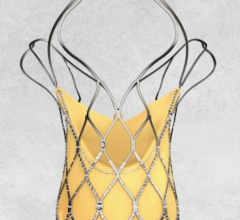
January 16, 2013 — Just weeks after the Food and Drug Administration (FDA) approved Cook Medical’s Zilver PTX drug-eluting peripheral stent, Riverside Methodist Hospital in Columbus, Ohio, has treated the first patient with the device as part of Cook’s U.S. commercial launch.
“It was a great honor for my institution to be first to implant Cook Medical’s Zilver PTX as part of the stent’s commercial roll-out,” said Gary Ansel, M.D., director for the Center for Critical Limb Care at Riverside Methodist Hospital. “This technology is so advanced and offers such prolonged patient benefit, I believe it will very quickly challenge older PAD treatments such as balloon angioplasty and bare metal stenting in the U.S. as the standard of PAD care.”
Zilver PTX, approved for use in the above-the-knee femoropopliteal artery, is the only drug-eluting stent approved for use in a peripheral artery in the U.S. The device reduces by more than 50 percent the need for follow-up procedures to reopen the artery. These follow-up procedures can be expensive, which places extra burdens on patients, physicians and facilities.
This combination therapy device combines the mechanical support of stenting with the drug paclitaxel, which limits cell growth that can reclog the artery. The combination has been shown to maintain arterial blood flow to the superficial femoral artery (SFA) in seven out of 10 patients through 24 months after implantation.
The disease Zilver PTX targets, peripheral arterial disease (PAD), is one of the fastest-growing and most pervasive diseases of our time, affecting an estimated 8-12 million Americans each year. PAD is a disease in which plaque builds up in the arteries, which carry blood to the head, organs and limbs. While PAD typically affects arteries in the legs, it can also affect blood flow to the head, arms, kidneys and stomach. People aged 50 and over who have a history of diabetes, smoking and high blood pressure are at higher risk for PAD.
Other treatment modalities for PAD include medical management, lifestyle changes such as exercise, balloon angioplasty, bare metal stenting and surgical bypass of the blocked artery.
For more information: www.cookmedical.com


 July 02, 2024
July 02, 2024 








